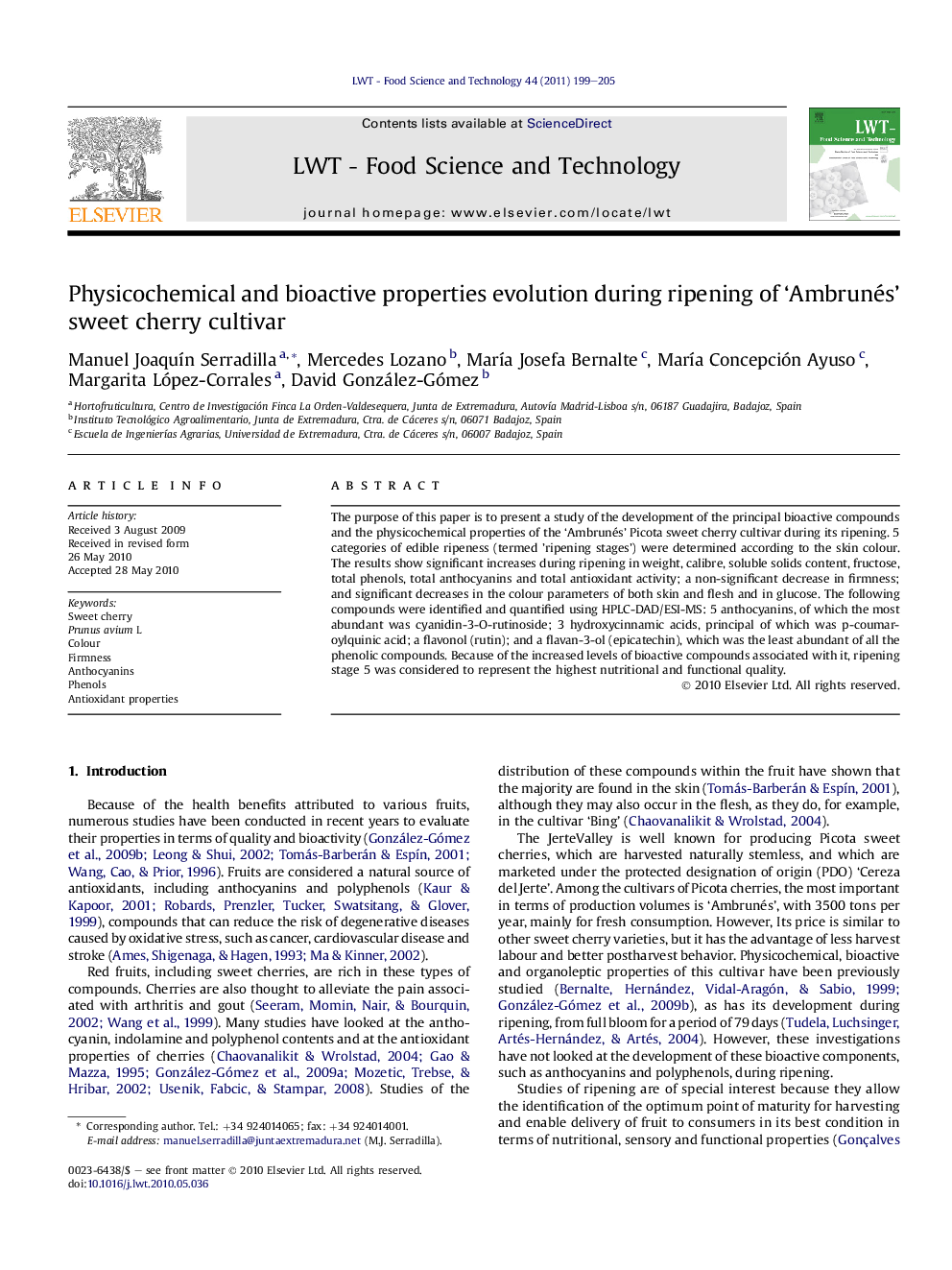| Article ID | Journal | Published Year | Pages | File Type |
|---|---|---|---|---|
| 4564233 | LWT - Food Science and Technology | 2011 | 7 Pages |
The purpose of this paper is to present a study of the development of the principal bioactive compounds and the physicochemical properties of the ‘Ambrunés’ Picota sweet cherry cultivar during its ripening. 5 categories of edible ripeness (termed ’ripening stages’) were determined according to the skin colour. The results show significant increases during ripening in weight, calibre, soluble solids content, fructose, total phenols, total anthocyanins and total antioxidant activity; a non-significant decrease in firmness; and significant decreases in the colour parameters of both skin and flesh and in glucose. The following compounds were identified and quantified using HPLC-DAD/ESI-MS: 5 anthocyanins, of which the most abundant was cyanidin-3-O-rutinoside; 3 hydroxycinnamic acids, principal of which was p-coumaroylquinic acid; a flavonol (rutin); and a flavan-3-ol (epicatechin), which was the least abundant of all the phenolic compounds. Because of the increased levels of bioactive compounds associated with it, ripening stage 5 was considered to represent the highest nutritional and functional quality.
